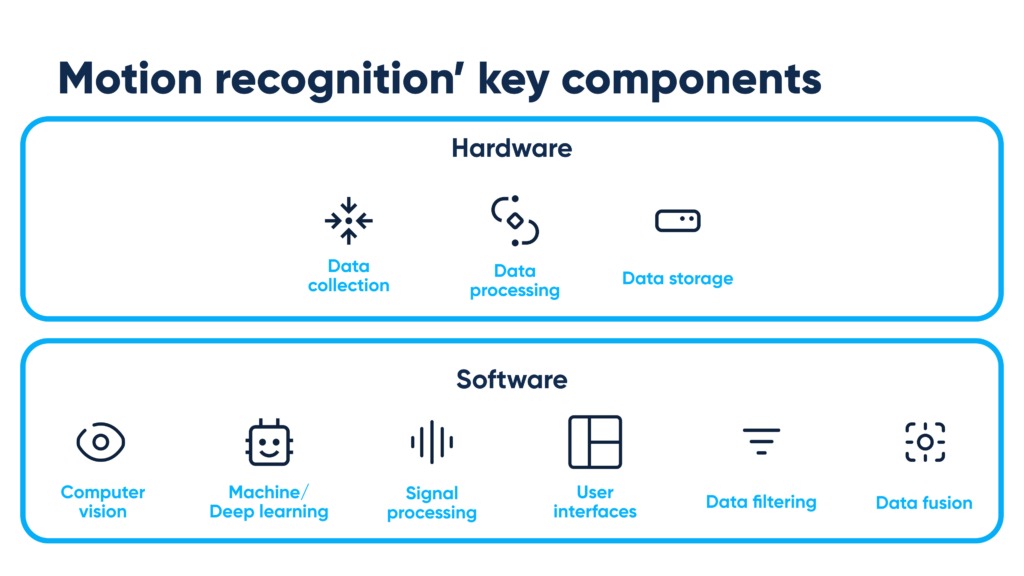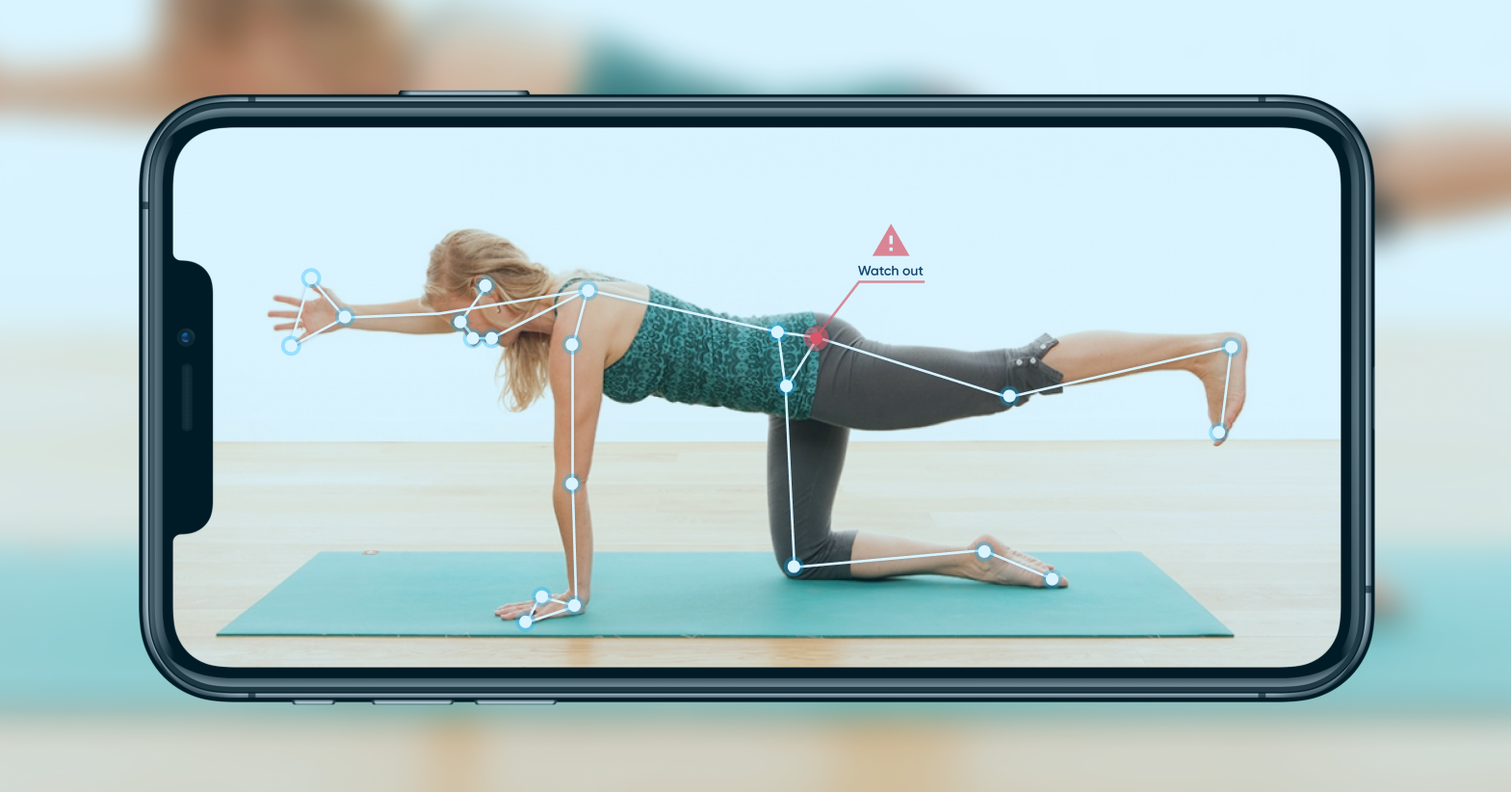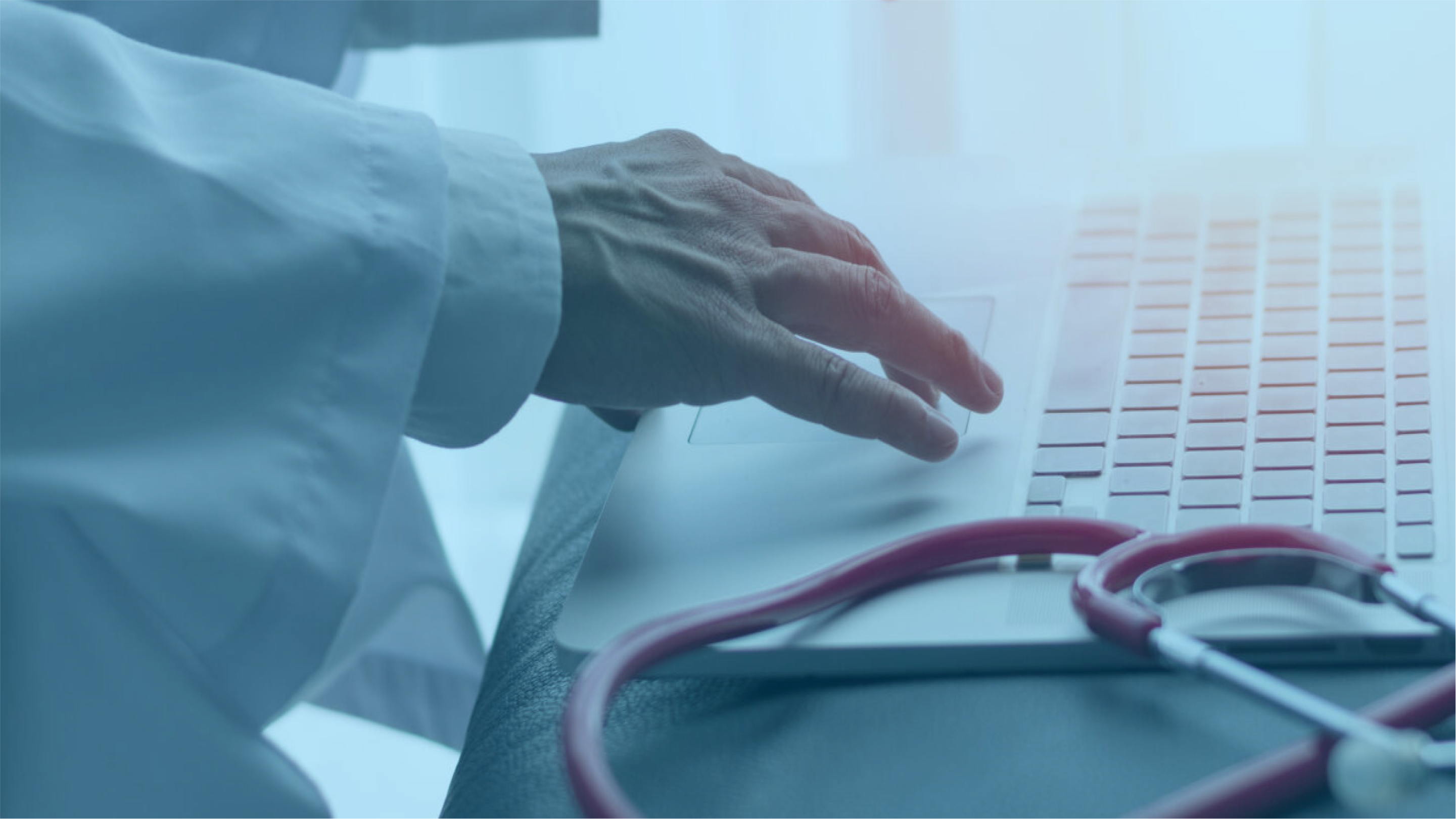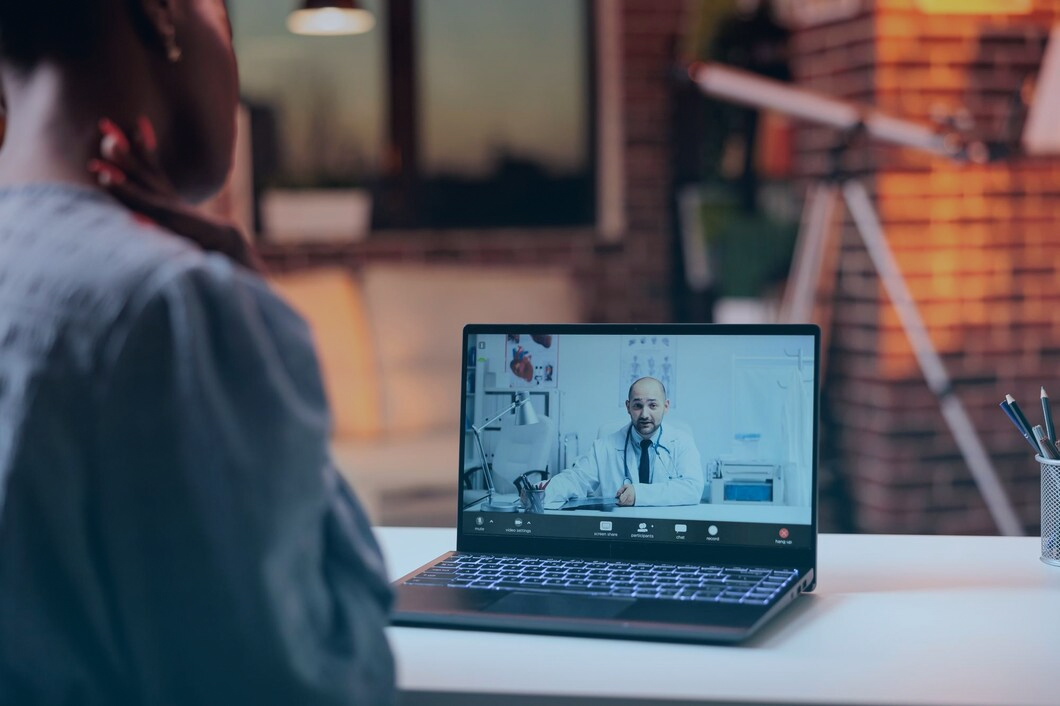Motion recognition to improve public health

In a modern world that’s defined by widespread digital transformation, the ability to harness the opportunities of camera-based movement recognition is revolutionizing not only daily living but also collective well-being.
By utilizing artificial intelligence, motion recognition has emerged as an influential force with the high potential to revolutionize public health, involving epidemiology, disease diversion, emergency preparedness, and more. Accurately processing dynamic movements, motion assessment and analysis can improve healthcare services, prevent disease, prolong life, and create happier communities.
In this quick overview, we’ll dive deeper into:
- Motion recognition, its concept, key components, and applications
- Pose detection
- Public health, its aspects and state
- How technology might improve public health and create happier communities
What is motion recognition?
Motion recognition is the automatic identification and interpretation of an object’s or individual’s movement. Motion assessment is utilized to detect, accurately analyze, and respond to patterns.
The technology can be successfully applied across industries, in particular in the healthcare domain, and others. The goal isn’t just to detect but understand the context of patterns, their intent, and nature to undertake according measures or provide relevant feedback.
Motion recognition’ key components

Hardware Components
- Data collection:
- Smartphone and tablet cameras
- Built-in accelerometers and gyroscopes
- Infrared, ultrasonic, radar sensors
- Data processing – high-speed processors handling vast data amounts in real-time, enabling automatic information input from sensors
- Data storage – secure warehouses temporarily preserving data collected, enabling seamless information access and analysis
Software Components
- Computer vision – CV algorithms process visual data captured from cameras to detect and analyze motion patterns, uncover changes between frames, and even track objects and individuals
- Machine & deep learning – ML and DL algorithms recognize specific data types to identify and interpret different movements or gestures, enhancing accuracy
- Signal processing – these algorithms process non-visual information captured from sensors to assess motion patterns
- User interfaces – this component allows users to interact with systems, set preferences, get feedback, and more
- Data filtering – sophisticated techniques (for example, the Kalman and Particle data filters) help refine and predict data captured to account for noise and inaccuracies
- Data fusion – these combine data from multiple sensors to get a more comprehensive understanding of movements and gestures
Practical application
Movement recognition has witnessed significant advancements, revolutionizing operations across industries. From different healthcare verticals to retail, education, government, construction, logistics, and others, movement assessment and analysis has found practical applications accelerating safety, workflow efficiency, and other critical aspects.
The technology is currently automating processes all across:
| Finance | – Fraud detection and prevention – behavior monitoring at ATMs to detect suspicious activities – Customer satisfaction and retention – gesture assessment at kiosks to simplify service selection |
| Retail | – Smart conveyors – product counting to automate processing flows – Automated checkout – product recognition to enable frictionless shopping |
| Education | – Attendance monitoring – movement monitoring in classrooms to track student attendance – Learning gamification – gesture assessment in virtual or augmented educational content to facilitate student engagement |
| Government | – Smart city – pedestrian and vehicular analysis to optimize urban planning – Public service – gesture analysis for kiosks to optimize citizen assistance |
| Construction | – Safety monitoring – real-time monitoring to detect unsafe practices at sites – Equipment control – gesture recognition to operate large machinery or drones – VR and AR training – motion recognition in immersive virtual environments to train construction workers |
| Transportation & logistics | – Security checks – hub monitoring to prevent unauthorized access – Warehouse operations – goods tracking to ensure efficient loading & unloading – Traffic management – pedestrian and vehicular analysis to optimize traffic signals or crossings |
| Automotive | In the automotive industry, motion detection and analysis can be used for driver monitoring and assistance, and advanced gesture control for navigation, and more |
| Agriculture | In the agricultural segment, motion recognition might optimize machinery and drone operations by leveraging gesture-based control |
| Entertainment and gaming | – Interactive games where players are mirrored by characters – Art installations where visitors can affect the content |
| Tourism and museums | – Movement monitoring managing crowds to facilitate visitor experience – Gesture-based interfaces providing directions or information for navigation |
Healthcare applications
Movement recognition considerably influenced conventional approaches across different healthcare verticals. From optimizing physical therapy and rehabilitation to supporting surgical professionals and facilitating cardiology and radiology outcomes, motion analysis is showing great potential.
Let’s delve into some of the healthcare applications of the innovative technology:
- Physical therapy and rehabilitation – pose detection to empower patients during post-surgical recovery or recovering after injuries by enabling continuous monitoring, real-time guidance, and individually tailored programs
- Surgical training and assistance – pose estimation to support specialists performing surgical procedures by facilitating intervention precision
- Elderly care – AI digital physical therapy to accelerate fall detection, gait analysis, exercise guidance, and assistance in basic daily activities
- Sports medicine – AI remote physical therapy to streamline injury prevention and treatment
- Orthopedics – motion recognition to diagnose and treat musculoskeletal conditions
- Pediatrics – early assessment and treatment of developmental movement disorders
- Neurology – studying disorders such as Parkinson’s disease, essential tremor, and others
- Pulmonology – studying how respiratory health is affected by movement and exercise
- Cardiology – activity monitoring to improve heart health
- Radiology – movement assessment to enhance image processing
What is pose detection?
Human body pose detection is a cutting-edge technology, which utilizes artificial intelligence (computer vision) to identify and track the positions of joints (head, shoulders, elbows, knees, and others) in images or videos. Pose assessment uses complex math algorithms (machine and deep learning) to analyze visual data and estimate human posture and movement.
Human body pose detection can be successfully implemented to benefit:
- Patients undergoing physical therapy and rehabilitation – applying online physical therapy can bring better outcomes by enabling personalized programs, real-time feedback and guidance, and tracking
- Patients with chronic conditions (MSK injury, MSK pain) – adopting virtual physical therapy can ensure faster recovery by facilitating long-term adherence and motivation
- Elderly people at risk of falls
- Disabled people
Digital therapeutics integrated into healthcare platforms can digitize and visualize the execution of exercises, eventually optimize physical therapy and rehabilitation, elderly care, sports medicine, and other related fields. Pose assessment might empower accurate diagnostics and treatment, personalized plans, real-time guidance, and more.
Talking about business leaders, those enjoy several benefits:
- Data processing – with human pose estimation, patient information can be automatically collected, stored, analyzed, and visualized on the administration dashboard
- Resource allocation – with 3D pose estimation, physical therapists mustn’t attend every workout, therefore saving both time and costs
- Patient-first service – pose detection ensures more accurate prescriptions and programs
- Customizable alerts – pose detection can be complemented by custom alerts to ensure timely response to missed training sessions or risk of injuries
How does pose detection differ from motion recognition?
Are these different names for the same technology?
Those approaches are related, but shouldn’t be confused.
In brief, both technologies are utilized to identify and process visual data associated with human movement. Pose detection is designed to compare gathered information to an established reference, whereas advanced motion recognition deals with dynamic movements without relying on previously defined templates.
Quick overview:
| Pose detection | Motion recognition | |
| Key purpose | The identification and tracking of joints in images and videos | The recognition and interpretation of movements being performed over time |
| The concept | The algorithms can analyze static images or frames to estimate the body’s exact positions and orientations | The algorithms can analyze a sequence of frames to recognize and interpret movement patterns, thus facilitating digital rehab |
| Practical applications | Healthcare-related routines (posture assessment), virtual reality, animation, gaming | Healthcare-related tasks, gesture-based interfaces, security, surveillance, sports analysis |
Summing up, movement tracking software implementation can bring significant improvement to conventional healthcare methods, in particular speaking about assessment precision, diagnosis, treatment, and monitoring.
But still, physical therapy apps might considerably differ in purpose, so it is recommended to do proper research before investment.
What is public health?
Public health stands for preventing disease, prolonging life, and handling health concerns within communities. These efforts and initiatives often involve organized cooperation between sectors – academic institutions, governmental agencies, non-governmental organizations, healthcare providers, and communities.
Public health typically includes several aspects:
- Health education and promotion – organized efforts and initiatives to encourage healthy lifestyles through education and community awareness campaigns
- Health policy and management – tailored policies and leadership to shape healthcare practices, including organization, financing, monitoring, and delivery of provided healthcare services
- Environmental health – the resolution of physical environmental problems, particularly ensuring drinking water, safe food, and pollution-free, clean air, and controlling environmental hazards
- Global health – the resolution of global health concerns that transcend national borders, often focusing on disparities and addressing the needs of populations in economically underdeveloped countries
- Epidemiology research – the study of causes and effects of specific health conditions in populations, which involves tracking diseases, investigating outbreaks, identifying common risk factors
- Biostatistics science – the appliance of various statistical methods to collect and analyze data gathered to enable informed decision-making
- Disease diversion – the implementation and promotion of vaccinations, screening programs, and other medical interventions to prevent the onset of diseases
- Emergency preparedness – the preparation and response to widespread health threats
- Administration of health services – the oversights and management of institutions to facilitated efficient delivery of services
- Control over infectious diseases – the monitoring and prevention of spreading infectious diseases within communities
Public health: important trends to mention
In times of a health crisis, data collection, accurate analysis, and sharing become essential for understanding threat nature, as well as determining appropriate response and evaluating the effectiveness of interventions. Recent emergencies, for example, the global COVID-19 pandemic, illuminated deficiencies in both the current health infrastructure and established healthcare practices.
Advanced technology might facilitate data management, including collection, automatic analysis, and sharing, but the United States faces burdens that impede healthcare professionals from effectively adopting innovation. What’s more, a lack of trust between both public and federal authorities can cause regulatory noncompliance.
Technology adoption: main challenges to address
Data privacy and security
AI in physical therapy requires collecting, processing, storing, and sharing of sensitive, personal information. This information might reveal personal habits and lifestyle, health conditions, visited locations, and other sensitive details.
If not properly secured, data gathered becomes vulnerable to breaches, unauthorized access, and thievery. Such mismanagement might cause privacy violations and impede the adoption of technology.
Data volume and storage
Telehealth in physical therapy generates considerable data amounts associated with crowd density, activity levels, and more. Such sheer data volumes are challenging to process.
An inadequate data infrastructure can cause data loss, inefficient retrieval, and unjustified business expenses. What’s more, these considerations become even more crucial when assessing health outcomes over extended time periods.
Assessment accuracy
Motion recognition systems might misinterpret information they process, especially given natural variability. Such misinterpretation might cause incorrect assessment and feedback, which create further issues.
If not designed dependable, the solution could provide false positives/negatives and deteriorate data accuracy. For instance, remote therapy monitoring solutions being utilized to automate physical therapy could wrongly assess progress or regress, influencing further treatment decisions.
Regulatory compliance
Health-related technology often comes under strict regulatory scrutiny that ensures appropriate protection. Although navigating this landscape is challenging, meeting established regulatory requirements is essential.
Being noncompliant can cause legal repercussions, reputational and financial damage, and other serious issues. Given that the modern healthcare industry is dynamic and competitive, these considerations should become every leader’s first priority when integrating movement analysis apps into everyday processes.
Motion recognition to improve public health
Motion recognition technology implementation might have significant impact on transforming public health. Unlike other technologies available, movement assessment and analysis can provide non-intrusive monitoring, real-time feedback, gesture-based interfaces, interaction analysis, and more dynamic adoption.
Motion recognition technology integration might transform:
- Data collection and processing – motion detection facilitates automatic data collection, providing more nuanced understanding of public health metrics (personal habits, health conditions, and adherence)
- Real-time monitoring and surveillance – motion detection provides continuous, real-time monitoring, enabling much faster responses to public health issues
- Patient satisfaction – the integration of movement assessment technology can make the interaction with today’s healthcare systems more intuitive and convenient, enhancing overall patient experience
- Resource allocation – the adoption of movement detection technology can provide valuable insights into areas requiring focus, enabling better informed decisions on optimization
- Workflow automation – by integrating recognition technology, repeated routines (patient monitoring) can be seamlessly automated, allowing professionals to focus on direct patient care
- Intervention customization – by implementing recognition systems, medical treatments, for example physical therapy and rehabilitation, can be better personalized, making them more efficient
- Formulation of prevention strategies – by gathering valuable insights from motion recognition data, local authorities can develop more targeted prevention strategies
- Improvement of environmental design – by understanding people’s interactions within environments, local authorities can make tailored modifications to facilities and other public spaces
In traditional healthcare settings, touchless interfaces being enabled by advanced movement recognition, might minimize infection transmission through surfaces, accordingly enhancing hygiene and infection control.
Unlike most wearable devices that focus on specific data points (heart rate, step count), movement detection might provide a more holistic understanding about posture, helping professionals better assess and analyze physical health.
How we can help
Summing up, as technology continues evolving, the potential of implementing motion recognition and analysis to reshape public health becomes evident.
By using data-driven insights, motion recognition can make healthy and happy communities achievable goals, transforming operations across industries, including healthcare, education, epidemiology, disease prevention. Abto Software delivers custom-built, on-demand products, providing future-proof business opportunities through modern-day computational technology.
Our projects:
- AI supported jump recognition and analysis to improve MSK health at schools
- CV empowered self-diagnosis application to enhance MSK therapy at home
Our services:


